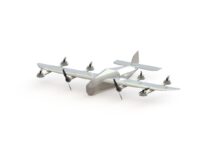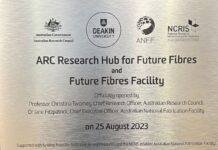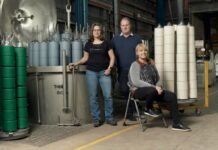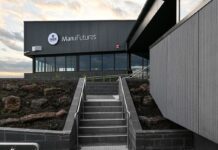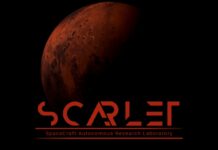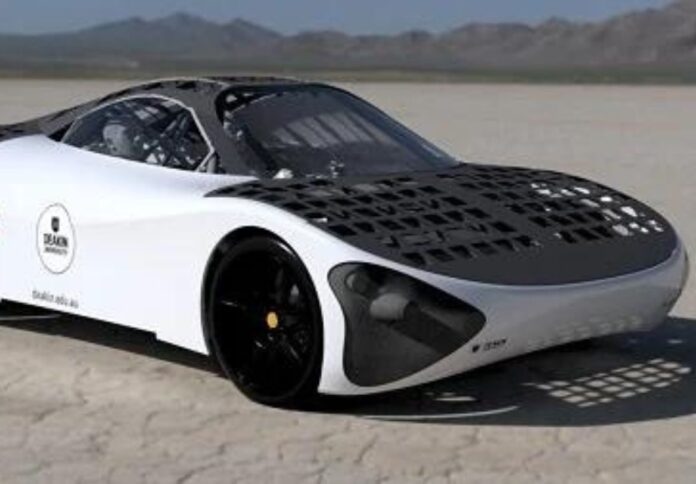
Media Release by Deakin University
After almost three years of lockdowns, COVID interruptions, a postponed race, makeshift home workshops and online learning, Deakin’s dedicated engineering students are finally at the stage where they are test-driving the car they designed and built for the 2023 World Solar Challenge.
“We cannot wait to take this car for a spin,” said Angus McDonald, a Deakin engineering graduate, and the solar team’s head mechanical engineer.
“The whole idea of a student-built, hyper-efficient, safe, electric solar vehicle makes the whole project so exciting. Now that we’re at the testing stage, to be able to drive this car around, is not only a thrill but something that makes me really proud.”
Having spent the last few months fine-tuning the build and measuring the cars’ power through dyno testing, the team is ready to hit the road.
Xander Profaca was studying engineering when he first joined the project in March 2020 – a week before Victoria went into lockdown. He has since graduated with a Bachelor of Mechatronics (Honours) but continues to work on the car as lead mechatronics engineer.
“The thing that excites me most is using so many cool technologies to construct a real, working car,” said Xander. “Some days coming into the workshop and seeing the car, it hits me, and I think, ‘I built that’, which gives me such a sense of pride knowing I helped bring the project to life.”
The 2023 Bridgestone World Solar Challenge will be held on October 20-27, 2023 and is a 3000-kilometre race stretching from Darwin to Adelaide. Young engineers from all over the world compete with their self-designed solar cars over five days. The vehicle will be driven across one of the world’s most challenging environments – outback Australia – using technological innovation powered only by the energy of the sun.
Deakin’s entry, codenamed ASCEND, will be competing in the Cruiser division. The race is in three stages over five days and the Cruiser division is judged on criteria including payload, energy consumption and a subjective element of ‘practicality’.
The cars are regulated, requiring them to be safe for use on the road.
“It’s great building a car to compete in the Cruiser class of the Bridgestone World Solar Challenge,” said Associate Lecturer Matt Jennings. “Deakin’s School of Engineering prides itself on our ability to teach students how to solve real-world problems by being innovative and creative, linking fundamental theory to cool new technologies. The Cruiser class was created to do similar: bring the innovations from the traditional Challenger class to a car that is much more practical and much closer to use by the general public.”
With this philosophy in mind, the car is designed to comfortably seat a driver and passenger as well as having cargo space. The project kicked off in 2019 and has involved nearly 1,000 Deakin students across multiple schools including Engineering, IT, Communication and Creative Arts and Business and Law.
Principle sponsor of the ASCEND vehicle ACCIONA Energía has partnered with Deakin to demonstrate to Australians how far renewable energy has come.
“We know that renewable energy is able to supply our cities and our businesses with plentiful power and the ASCEND vehicle encapsulates what clean energy is capable of,” said ACCIONA Energia GM of Brand and Marketing Emma Reiners.
The project has not been without challenges – two-thirds of the build took place during Victoria’s extended lockdown.
Head of Deakin’s School of Engineering Professor Ben Horan said it has been inspiring to see the students and car progressing alongside each other.
“This such a great project that is so wide-reaching in the challenges and experiences for the students.
These range from the technical challenge of getting the car to a point where it can be driven the length of the country, all the way through to the strategy of how to optimise use of power to achieve the highest performance.
Seeing the students develop and grow over the course of the project has been very exciting,” said Professor Horan. “In some ways I can’’ imagine a more authentic learning experience for the students involved – and providing these learning opportunities is what it’s all about.”
ACCIONA Energía and Deakin’s partnership came about as part of the Victorian Government’s Victorian Renewable Energy Target Auction (VRET2) as part of the bid to build the Mortlake South wind farm in western Victoria.



